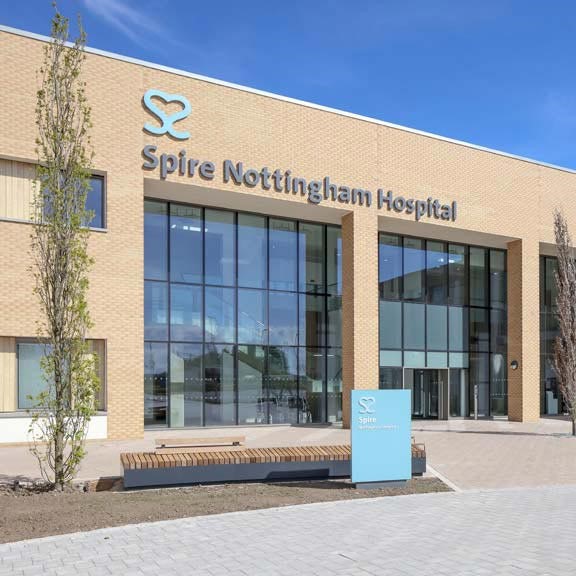Breast uplift (mastopexy)
Improve the shape of your breasts and help rejuvenate your figure.
We offer a breast uplift operation, also known as a mastopexy, which re-shapes drooping or sagging breasts.
Sometimes also called
- Breast lift
- Mastopexy
At a glance
-
Typical hospital stay
Same-day discharge or 1 night -
Procedure duration
1-3 hours -
Type of anaesthetic
General -
Available to self-pay?
Yes -
Covered by health insurance?
No
Why Spire?
- Fast access to a wide range of treatments
- Consultants who are experts in their field
- Flexible payment options to help you spread the cost
- 98% of our patients are likely to recommend us to their family and friends
What is breast uplift surgery (mastopexy)?
It’s an operation to treat drooping breasts without altering their size. Your surgeon will remove any loose skin and your breasts are raised and re-shaped, giving them a firmer, younger look.
Drooping or sagging can happen as a result of:
- Pregnancy
- Weight loss
- Ageing
A breast uplift may be an option if:
- Your breasts are flatter and longer than they were
- You’re not planning a pregnancy in future – pregnancy stretches your skin and will increase the risk of drooping again
- Your nipples fall below your breast crease when you’re not wearing a bra
- Your nipples and areolae, the coloured part surrounding your nipple, point downward
- Your areolae have stretched out of proportion to your breasts
- One of your breasts is lower than the other
- The appearance of your breasts is affecting your confidence
Breasts of any size can be lifted, but results are best for women with small breasts. Large breasts are heavier and more prone to sagging, so the effects of the uplift may not last as long.
You may have the operation at the same time as a breast reduction or enlargement.
Choosing to have breast uplift surgery is an important decision. Take your time to think about why you want the surgery and research what it involves – now and in the future. At Spire, our experienced surgeons are all approved by the British Association of Aesthetic Plastic Surgeons (BAAPS). They’ll help you to reach the right decision and achieve the results that are right for you.
Find your nearest Spire hospital
Almost all our hospitals offer private breast uplift surgery and have teams of cosmetic surgeons who specialise in this treatment.

Events
Meet & Greet the Surgeon - Mr Gregory E. Ekatah
Meet & greet Mr Gregory E. Ekatah, Consultant Robotic Colorectal and General Surgeon.
Learn more
Free 10 minute mini appointments - Wave goodbye to hand, wrist & elbow pain
Join us with Mr Gunaratnam Shyamalan, Consultant Hand Surgeon, who specialises in hand, wrist and elbow conditions.
Learn more
Free 10 minute mini appointments - Hand, elbow & shoulder pain
Join us with Mr Tim McBride, Consultant Orthopaedic Surgeon, who specialises in hand, elbow, and shoulder conditions.
Learn more
How breast uplift surgery (mastopexy) works
With age, your skin and the ligaments in your breasts become stretched, so the tissue isn’t as well supported. This causes drooping, along with anything that causes changes in breast size such as pregnancy or significant weight loss.
A breast uplift can help by:
- Removing extra skin
- Lifting and remodelling your breast tissue
- Moving your nipples higher up your breasts
- Reducing the size of your areola, the coloured part surrounding your nipple
You can also have a breast reduction or enlargement at the same time.
Breast uplift techniques
There are three main techniques. Your surgeon will advise you which is most appropriate for you, depending on your breast size, shape and the look you want. They all result in different scarring patterns, though the scars shouldn’t be visible when you’re wearing a bra or bikini:
- Incisions are made around your areola – best for narrow breasts that only need a small amount of lift
- Incisions are made around your areola and in a vertical line down to the crease below your breast – best for narrower breasts with mild-to-moderate sagging and only slight nipple movement needed
- Incisions are made around your areola, in a vertical line to the crease below your breast, and along the crease in an anchor shape – best for wide breasts with a lot of sagging and more nipple movement needed
What to expect during breast uplift surgery
After you’ve been given a general anaesthetic (meaning you’ll be asleep), your surgeon will:
- Make incisions (cuts) according to the agreed technique
- Remove excess skin from under your breast
- Re-shape your breast tissue into a tighter cone shape
- Move your nipples to their new position, reducing the size of your areola if agreed beforehand
- Close your cuts with stitches, surgical tape or glue
- Wrap your breasts in a special supportive dressing or tape
How long does a breast uplift take?
Between two and three hours
Pain after breast uplift surgery
It’s normal to experience some pain, swelling and bruising after the operation and in the following weeks. You’ll be given pain relief medication to help you manage this and it’ll gradually improve.
Your hospital stay
This will usually be for one night, but you can sometimes go home on the same day.
Recovering from breast uplift surgery
Recovery time
You can usually leave hospital the day after or sometimes on the same day as the operation. It’s normal to still have bruising, twinges and some pain for a few weeks but it may take a few months for the swelling to disappear and up to a year for your breast shape to settle.
Aftercare
Before you go home, your nurse will give you advice about caring for your wounds, looking after your breasts, hygiene and showering. Your consultant will arrange a date for your first follow-up appointment.
They'll want to see you at intervals during the first six months to check that everything’s as it should be.
Your lifestyle
As with any big operation, you’ll need someone to help you with light errands for the first few days. But you should be back to light activities within a fortnight and normal activities within four to six weeks. Avoid heavy lifting for the first few weeks.
It’s important to wear a support bra without underwiring for 24 hours a days for the first six weeks, to stop the weight of your breasts pulling on your wounds as they heal.
After six months, the upper part of your breast will become less full – this is normal.
Breast uplift surgery is usually successful, but your breasts may droop again in future, especially if they’re large or you become pregnant or lose a lot of weight. You can help reduce your risk by keeping your weight stable.
Risks and complications of breast uplift surgery
Most people have a breast uplift without complications, but all surgery carries some risk and your consultant will explain these to you before you go ahead.
Although rare, breast uplift complications can include:
- Stitches poking out through your skin
- Red or raised scars
- Unevenly positioned nipples or changes in sensitivity to your nipple, which can be temporary or permanent
- Breasts not the same shape or size
- A build-up of fluid in your breast
- Loss of blood supply to an area, causing tissue death and lumpiness
- Damage to deeper structures, such as nerves, blood vessels, muscles and your lungs
- Bleeding inside your breast
At Spire hospitals, your safety is our top priority. We have high standards of quality control, equipment and cleanliness and an ongoing system of review and training for our medical teams.
Treatment and recovery timeline
Although everyone’s different, here’s a rough guide to recovery after breast uplift surgery:

Day 1
1 year
Same day or next day
You’ll be able to leave hospital
1-2 weeks
Stitches removed unless they’ve dissolved
1-2 weeks
May be able to drive (check with your car insurance company)
2 weeks
Back to work, depending on your job
2 weeks
Able to do light activities
6 weeks
Back to normal activities including exercise
Up to 6 weeks
Wear a support bra for 24 hours a day (apart from showering)
Up to 1 year
Keep your scars out of direct sunlight
1 year
Shape of your breasts should've settled
-
Same day or next day
You’ll be able to leave hospital
-
1-2 weeks
Stitches removed unless they’ve dissolved
-
1-2 weeks
May be able to drive (check with your car insurance company)
-
2 weeks
Back to work, depending on your job
-
2 weeks
Able to do light activities
-
6 weeks
Back to normal activities including exercise
-
Up to 6 weeks
Wear a support bra for 24 hours a day (apart from showering)
-
Up to 1 year
Keep your scars out of direct sunlight
-
1 year
Shape of your breasts should've settled
The treatment described on this page may be adapted to meet your individual needs, so it's important to follow your healthcare professional's advice and raise any questions that you may have with them.

